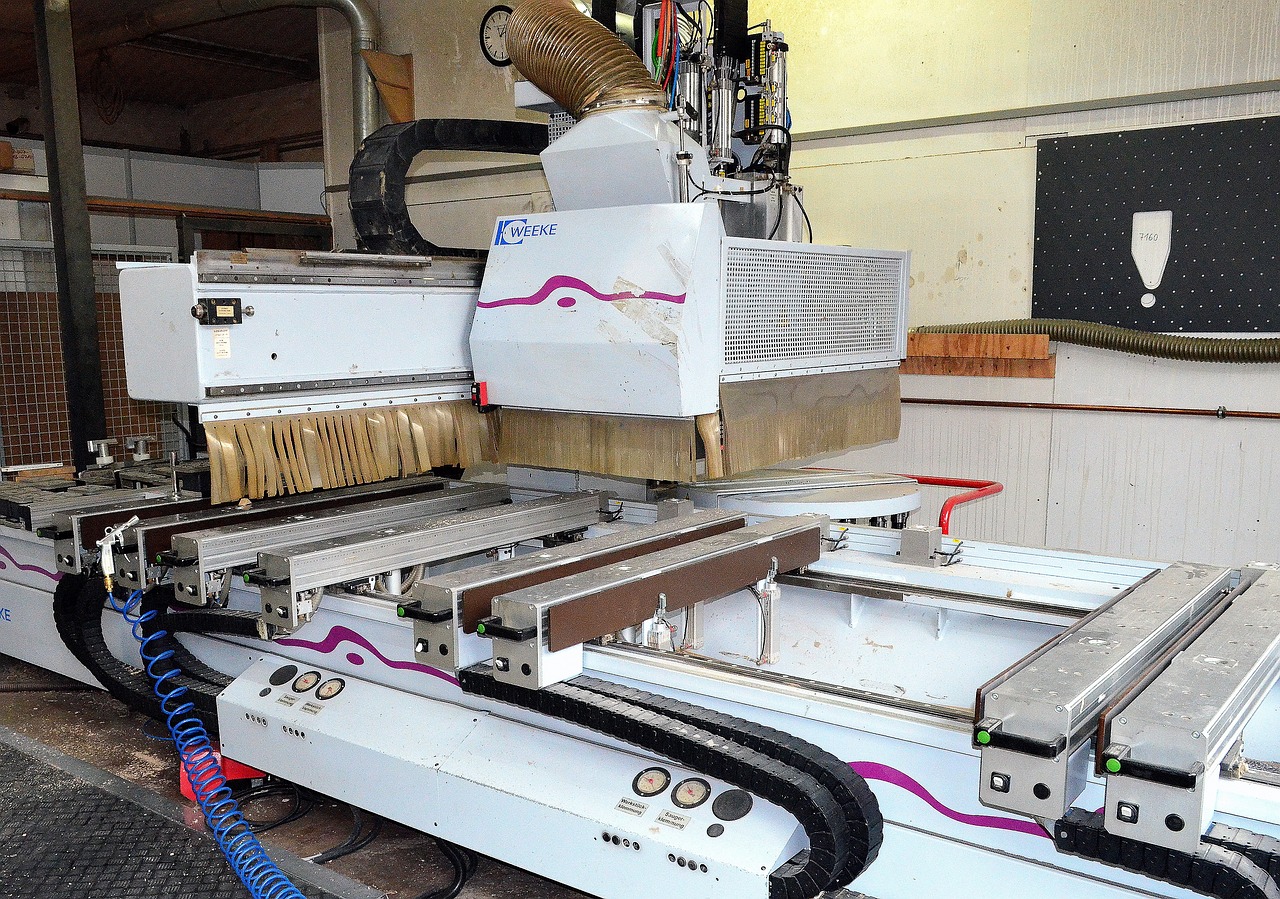In today's fast-paced work environment, technology plays a crucial role in how employers manage their teams. With the rise of remote work and digital communication, businesses are increasingly relying on various technological tools to monitor their employees. This shift prompts us to explore the ways in which employers use technology to monitor their workforce.
In the not-so-distant past, the workplace was a physical space where supervisors could easily observe their employees. However, as technology evolved, so did the methods of employee surveillance. From computer monitoring software to GPS tracking and video surveillance, employers now have a multitude of tools at their disposal. This blog post aims to shed light on the different aspects of employee surveillance in the digital age, addressing both the reasons behind its implementation and the impact it has on employees.
It becomes apparent that understanding how employers use technology to monitor their staff is essential. The dynamics of the modern workplace, with its blend of in-office and remote work, add complexity to the issue. The intention is not to cast technology as the villain but to examine its role in the delicate balance between organisational needs and the rights and well-being of employees.

Types of Employee Surveillance Technologies
Now that we've established the importance of understanding employee surveillance, let's take a closer look at the various types of technologies employers use to keep tabs on their teams. It's like shining a light on the different tools in the employer's toolkit:
Computer Monitoring Software
Imagine your computer being watched, not by a person, but by software. Employers use these programs to track your digital activities – from the websites you visit to the time spent on specific tasks. It's like having a digital guardian keeping an eye on your work habits.
|
GPS Tracking and Location-Based Tools |
Have you ever wondered how your boss knows where you are during work hours? GPS tracking and location-based tools allow employers to monitor employees' movements. This is often used for remote workers or those in the field, ensuring everyone is where they need to be. |
|
Video Surveillance and Facial Recognition |
It's like having electronic eyes in the workplace. Video cameras may be set up to observe employees, and facial recognition technology can identify individuals. This technology is commonly used in physical office spaces for security purposes. |
|
Email and Communication Monitoring |
Have you ever felt like your emails were being read? Employers may use tools to monitor email content and communication channels. This helps them ensure that work-related conversations are in line with company policies. |
|
Social Media Monitoring |
Social media is a part of our daily lives, but did you know that employers might be keeping an eye on your online activities? Some companies use tools to monitor employees' social media posts to safeguard the company's reputation and address potential issues. |
Understanding these technologies is crucial because it allows us to see the different ways employers can gather information about their employees. As we explore further, we'll delve into the reasons behind the use of these technologies and how they impact the work environment.

The Legal Landscape
Now, let's talk about the rules and regulations that govern how employers can use technology to keep an eye on their employees. It's like understanding the boundaries in a game – there are rules to follow.
|
Employee Rights and Privacy Concerns |
Just like you have the right to privacy at home, you also have rights at work. Laws often protect employees from intrusive surveillance. Understanding these rights is like having a shield – it helps ensure your privacy is respected even in the workplace. |
|
Overview of Relevant Labor Laws and Regulations |
Think of labour laws as the rulebook for employers. There are guidelines on how they can use technology to monitor employees. These rules vary by country and region, so it's essential to know what applies to you. It's like understanding the specific rules of the game you're playing. |
|
Legal Implications of Employee Surveillance |
Employers need to play fair. If they overstep the boundaries set by the law, there can be consequences. Legal implications may include fines or other penalties. Knowing the legal landscape is like having a roadmap—it guides employers on how to use surveillance technologies without breaking any rules. |
Understanding the legal side of employee surveillance is crucial. It ensures that both employers and employees are playing by the same set of rules, creating a fair and respectful workplace environment. As we move forward, we'll explore how these laws shape the reasons behind employee surveillance and its effects on the workplace.

Reasons Behind Employee Surveillance
Now, let's uncover why employers use technology to keep an eye on their teams. It's like figuring out the reasons behind a puzzle – each piece has a purpose.
|
Increased Focus on Productivity and Efficiency |
Imagine you have a big project, and you want to make sure everyone is working together smoothly. Employers use surveillance tools to track productivity, making sure tasks are getting done efficiently. It's like having a watchful eye to keep the work engine running smoothly. |
|
Security Concerns and Prevention of Insider Threats |
Just as you lock your house to keep it safe, companies use surveillance for security. Employers want to protect their sensitive information from potential threats, and these tools help prevent internal risks. It's like having a security guard for digital information. |
|
Remote Work Challenges and the Need for Performance Metrics |
With more people working from different locations, employers face new challenges in managing teams. Surveillance helps measure performance and ensures that remote workers are staying on track. It's like having a virtual report card to understand how everyone is contributing. |
|
Employer Perspectives on Monitoring for Business Interests |
Think of a business like a ship sailing through the sea. Employers use surveillance to steer the boat in the right direction, aligning everyone with the company's goals. It's like having a compass to guide the organisation toward success. |
Understanding these reasons helps us see that employee surveillance isn't necessarily about distrust. Instead, it's often about maintaining a smooth workflow, ensuring security, and steering the business toward success. As we continue, we'll explore the impact these surveillance measures can have on employee morale and well-being.

The Impact on Employee Morale and Well-being
Now that we know why employers use technology to monitor their teams let's explore how this surveillance can affect the people behind the screens. It's like examining the ripple effects of a stone thrown into a pond.
|
Stress and Anxiety Caused by Constant Surveillance |
Imagine if you felt like someone was watching your every move throughout the day. That constant feeling of being monitored can create stress and anxiety. Employees might worry about making mistakes or being judged, affecting their overall well-being. |
|
The Fine Line Between Monitoring and Micromanaging |
There's a balance between keeping track of work progress and micromanaging every detail. Too much surveillance, where every click and keystroke is monitored, can make employees feel suffocated. It's like trying to do your homework with someone watching over your shoulder. |
|
Potential Erosion of Trust Between Employers and Employees |
Trust is like the glue that holds a team together. Excessive surveillance might make employees feel like their employers don't trust them. This erosion of trust can harm the overall work atmosphere and collaboration. It's like a foundation cracking under the weight of suspicion. |
Understanding these impacts is crucial because it helps us see the human side of employee surveillance. It's not just about the numbers and productivity; it's about the people who make the workplace function. As we move forward, we'll explore how employers can find a balance between their organisational needs and the well-being of their employees.

Balancing Employee Privacy and Organizational Needs
Now that we've seen the impact of employee surveillance on well-being, let's explore how employers can find the right balance between keeping things in check and respecting the privacy of their teams. It's like trying to keep a seesaw level – finding that sweet spot.
|
The Need for Clear Communication and Transparency |
Imagine you're playing a team sport. Communication is key to winning. Employers should communicate clearly about why surveillance is in place and how it benefits both the company and employees. It's like making sure everyone on the team knows the game plan. |
|
Establishing Policies and Guidelines for Responsible Technology Use |
Just like having rules in a game, workplaces need clear policies about how surveillance tools are used. These rules should protect employee privacy while ensuring organisational goals are met. It's like having referees in a game – they ensure everyone plays by the rules. |
|
Employee Involvement in Decision-Making Processes |
Imagine being part of a team where everyone has a say in the game strategy. Employers should involve employees in decisions about surveillance tools. This ensures that everyone is comfortable with the level of monitoring, creating a more cooperative work environment. |
Finding the right balance is like creating harmony between the organisation's needs and the employee's rights. It's not about choosing one over the other but rather about crafting a workplace where both can coexist. As we move forward, we'll explore real-world examples and case studies to understand better how companies navigate this delicate balance.

Ethical Considerations
Now, let's dive into the ethical side of employee surveillance. It's like exploring the moral compass that guides how companies should treat their employees.
|
Exploring the Ethical Implications of Employee Surveillance |
Ethics are like the unwritten rules of fairness. When it comes to surveillance, it's essential to consider whether the methods used respect employees' dignity and privacy. It's like asking, "Is this the right way to treat others?" |
|
Responsibilities of Employers in Protecting Employee Privacy |
Employers are like guardians of a workplace. They have a responsibility to protect their employees, including their privacy. Respecting boundaries is crucial in creating a work environment built on trust. It's like ensuring everyone feels safe and secure. |
|
The Role of Technology in Shaping Ethical Workplace Practices |
Technology can be a force for good or for concern. Employers need to use technology ethically, ensuring that surveillance tools enhance productivity without infringing on individual rights. It's like using a tool responsibly and understanding its impact on others. |
Understanding these ethical considerations is like having a moral compass to navigate the landscape of employee surveillance. It's not just about what is legal but also about what is right. As we move forward, we'll explore how companies can uphold ethical practices in the use of surveillance technologies, promoting a workplace culture that values both efficiency and fairness.

Future Trends and Innovations
Now, let's peer into the crystal ball and explore what the future holds for employee surveillance. It's like anticipating the next big thing in technology and how it might affect our workplaces.
|
Emerging Technologies in the Field of Employee Surveillance |
Technology is always evolving, and workplaces are no exception. Imagine new tools that can track work progress in even more detailed ways. From advanced AI to innovative sensors, the future might bring about more sophisticated ways of keeping tabs on tasks and projects. |
|
Predictions for the Future of Workplace Monitoring |
Think of the workplace as a constantly changing landscape. Experts make predictions about how surveillance will adapt to new work trends. The future might see a blend of in-office and remote monitoring solutions catering to the evolving nature of work environments. |
|
Potential Advancements and Challenges on the Horizon |
Just like any journey, there will be both smooth paths and hurdles. As technology advances, there might be challenges in ensuring ethical use and maintaining a balance between surveillance and individual privacy. It's like navigating a road with both exciting opportunities and potential pitfalls. |
Understanding these future trends is like preparing for a journey into uncharted territories. It allows us to anticipate changes, adapt to new technologies, and ensure that the workplace continues to evolve in a way that benefits both employers and employees. As we wrap up, we'll summarise the key points and encourage a balanced approach to employee surveillance in the ever-changing landscape of work.

Conclusion
As we close this chapter, it's crucial to highlight the need for balance. Like a seesaw, finding an equilibrium between organisational needs and individual rights is key. Clear communication, transparent policies, and ethical considerations are the tools we use to maintain this balance.
Looking ahead, the future promises new technologies and innovations. However, it's essential to approach these advancements with an ethical compass, ensuring that progress doesn't compromise the well-being and privacy of the workforce.

In the evolving world of work, let's strive for a workplace where technology enhances productivity without sacrificing the human element. By understanding, adapting, and approaching employee surveillance with care, we can create a work environment that fosters both efficiency and respect for individual rights.


 Let's dive right into how Iwoscan can reshape your manufacturing pipeline
Let's dive right into how Iwoscan can reshape your manufacturing pipeline
Comments
No comments yet!Add a Comment
You must be logged in to post a comment.